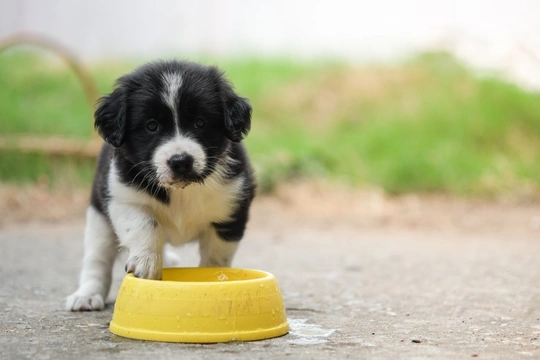
What could be dangerous in your dog’s water bowl
Hopefully, most dog owners are diligent in keeping their dog’s water bowls clean and free of bacteria that can collect in them. Living in the UK, there is a plentiful supply of good, clean water which is great for hydration, but must be kept clean – not just a quick rinse out. All kinds of germs and foreign bodies can and will collect in them and can potentially cause your dog some very nasty infections.
But it is not just their bowls – pets just love to stick their noses into water that is dirty! It’s a strange trait, but the smellier or dirtier it is, seems to be much more attractive to them. Walking your dog to his favourite place over the woods or fields is never a quick activity – they will stop and drink from puddles, upturned bins etc., anywhere that water has collected. Do drag them away, as this desire can be toxic.
You also need to be careful yourself, as some of the diseases that your pet can contract, can be passed on to you very easily. Such an event is called zoonosis, and the most common infections passed on are salmonella, campylobacter and various forms of worms.
It is not just their mouths that will carry diseases. Licking their paws or other parts of their bodies after drinking dirty water, can mean that they transfer the germs and bugs onto their coats and deposit them elsewhere for you to pick up and become ill, quite often by merely stroking them or by leaving them in your car. It is not just handling the bowl itself, as we all know that bacteria or any kind multiplies and spreads at an alarming rate of knots.
Some dogs are more resistant to certain germs and illnesses but remember that puppies are always at risk as they have far more immature digestive systems and are more likely to eat and drink anything and everything!
What else can my dog contract from dirty water?
There is a large variety of illnesses that your dog could catch from dirty bowls or indeed, dirty and infected lakes, puddles etc, some of which just give them a nasty tummy upset (that’s bad enough in the house, for both of you), but there is a potentially devastating cyanobacteria that can have deadly consequences. No wish to alarm you, but this is more prevalent in the summer months, and can not only be contracted through drinking, but also it can be absorbed through the skin.
If you notice really bad smelling water, it could contain BGA (Blue Green Algae) which can be seen on top of the water, which is why it gives off such a stench. It can form almost anywhere there is water.
As hard as it is, if your dog is one that loves to run off the second you get them out on their walk by the local pond, they would be safer not to run wild until out in the open fields. Slight exposure to these algae really is dangerous for both dogs and humans.
Although it may seem a little over the top, an increasing number of owners are taking water with them, both on long trips and their daily walk. This will ensure that your dog is only drinking clean water when thirsty and not tempted to dive into the nearest lake and swallow a bucket load.
When out and around, you will see water bowls left outside pubs, restaurants and other communal facilities all around the country. Whilst this is a delightful touch and warms your heart that proprietors of these establishments must love dogs, it is potentially dangerous. Bacteria of some sort will almost certainly be present, and infected dogs may already have drunk from these bowls before your pet can quench his thirst.
Respiratory infections such as Kennel Cough. Canine Papilloma Virus and even Canine Flu can be contracted from bowls lovingly put out for your thirsty friend, so best to avoid them and take your own clean receptacle.
Cleaning your home water bowls
Obviously cleaning both food and drink bowls is of great importance to you and your dog. Do keep both away from your main eating areas. If your pet is one that enjoys more than one water station, i.e. inside and outside, remember to clean both bowls effectively, every day.
The consequence of irregular cleaning can cause a horrible residue to form, which is also slimy to the touch. This is called biofilm, which harbours bacteria from food or dirty water, and the saliva from your dog’s mouth. Several infections can emanate from this film, including salmonella, enteritis, urinary tract illnesses and even gum disease – you wouldn’t want to put your pet through that. Rinsing and even soaking in hot soapy water should keep your dog’s bowl in good order, but if they become engrained and you really cannot tell how clean they are, it is best to replace them.
Are certain bowls better and safer than others?
There is a strong school of thought that plastic bowls can be harmful to pets, and possibly contain BPA, which is a cancer-inducing material, and this is known to leak out into food or drink. There is also the danger that your pet may chew the bowl, particularly if it is empty of food or water!
Stainless steel seems to be the ‘bowl of the moment’. They are more sanitary and easier to clean, but it is worth doing research into. Other ideas are using drinking fountains for your dogs, but this will only work if you keep the fountain clean – whichever way, the bottom line is daily cleaning of your dogs’ source of water. They deserve it.



